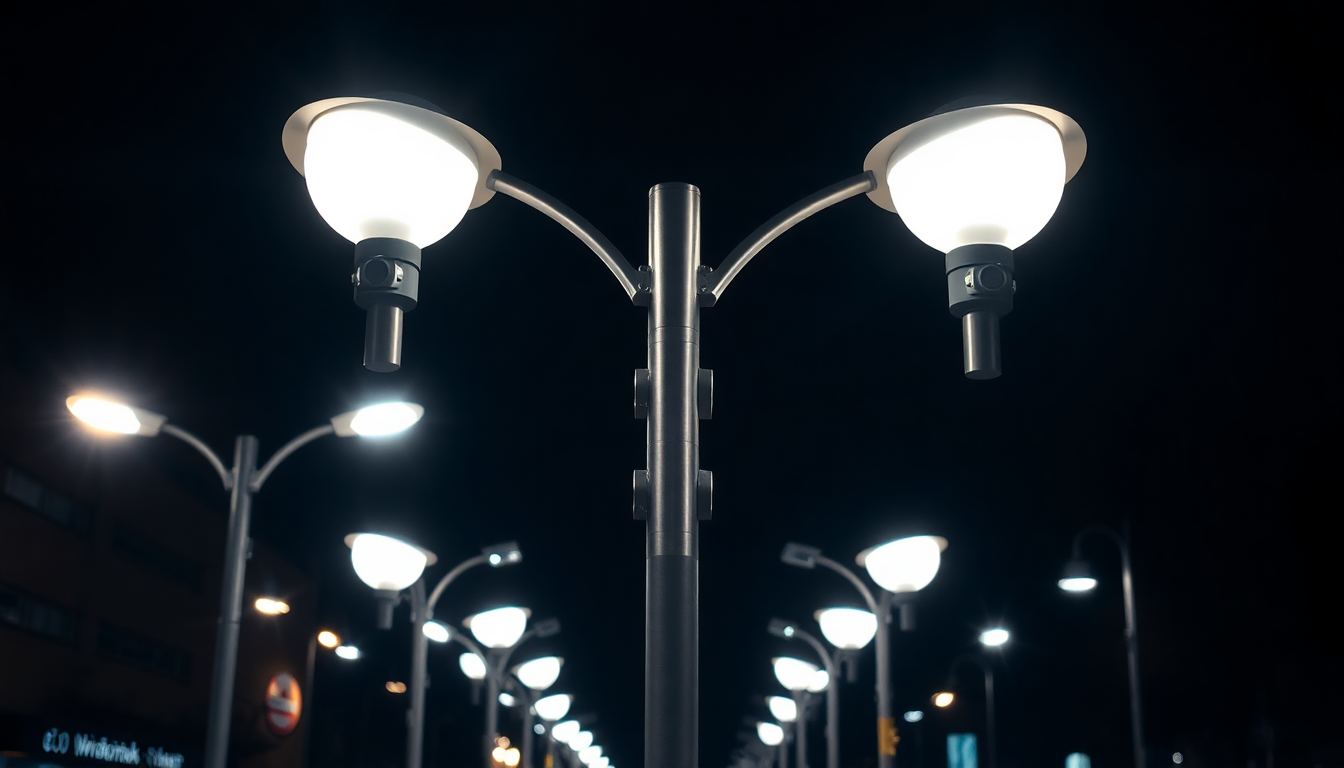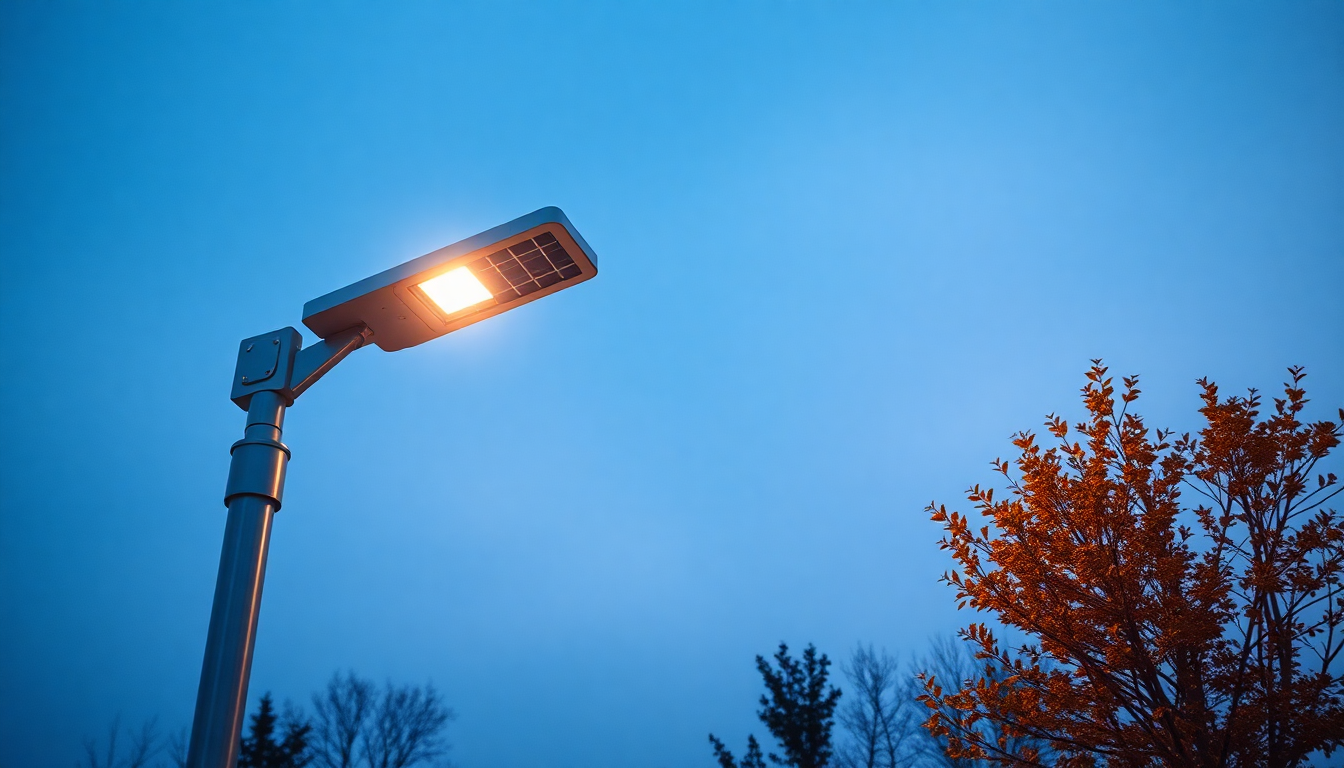Introduction
In 2025, urban landscapes around the world are undergoing a transformative shift driven by cutting-edge technological advancements. Among these, the integration of Internet of Things (IoT) and Artificial Intelligence (AI) into outdoor lighting systems stands out as a pivotal development. Smarter night lighting is no longer just about illuminating streets; it now encompasses safety, energy efficiency, cost savings, and resident comfort. This comprehensive approach to outdoor lighting is shaping the future of smart cities, creating safer, more sustainable, and more comfortable environments for all residents.
The Evolution of Night Lighting Technology
Historically, street and outdoor lighting systems operated on fixed schedules, providing illumination regardless of actual need. This approach was inefficient, leading to unnecessary energy consumption and increased maintenance costs. As urban populations grew and energy concerns intensified, the need for more intelligent solutions became apparent. The advent of IoT enabled sensors, connectivity, and data collection, laying the foundation for smarter lighting systems. Subsequently, AI algorithms enhanced these systems’ capabilities by enabling real-time decision-making, predictive maintenance, and user-oriented lighting adjustments. Today, these innovations are revolutionizing outdoor lighting, transforming it from static infrastructure into dynamic, adaptive systems capable of responding to ever-changing environmental and human factors.
Strategic Components of IoT and AI-Powered Night Lighting Systems
Modern smart lighting solutions leverage a combination of technology components:
- Sensors and Detectors: Motion sensors, ambient light sensors, weather sensors, and surveillance cameras collect real-time data on activity levels, environmental conditions, and security threats.
- Connectivity Networks: 5G, Wi-Fi, Low Power Wide Area Networks (LPWAN), and other communication protocols transmit data to centralized control systems or cloud platforms.
- Data Analytics and AI Algorithms: Machine learning models analyze data to identify patterns, predict future needs, and automate lighting controls.
- Adaptive Control Systems: Intelligent controllers adjust lighting based on insights from AI analysis, including brightness, color temperature, and operational timing.
Advantages of Implementing IoT and AI in Night Lighting
The fusion of IoT and AI in outdoor lighting offers multifaceted benefits that significantly surpass traditional systems:
1. Improving Safety and Security
- Smart lighting responds to motion detection, illuminating walkways and public spaces when needed, thereby reducing accidents and falls.
- Cameras and sensors detect suspicious activities or unusual behaviors and trigger lighting adjustments or alerts for security personnel.
- During emergencies or natural disasters, lighting systems can be coordinated to aid evacuation and rescue efforts.
2. Achieving Energy Efficiency and Cost Savings
- Adaptive dimming reduces lighting levels during periods of low activity, conserving energy and lowering utility bills.
- Scheduled and event-based lighting minimizes wastage, operating only when necessary.
- Predictive maintenance reduces downtime and repair costs by identifying equipment issues before failure occurs.
3. Enhancing Resident Comfort and Well-Being
- Adaptive lighting preferences can be set to reduce light pollution, maintaining dark skies while ensuring safety.
- Dynamic color temperatures can be used to minimize circadian disruption and improve sleep patterns for residents.
- Improved lighting quality leads to a better aesthetic environment, fostering a sense of community and well-being.
4. Facilitating Data-Driven Urban Planning
- Aggregated data helps city planners understand activity patterns, traffic flows, and safety hotspots.
- This information supports informed decision-making for future infrastructure projects and upgrades.
Distributed Intelligence: How IoT and AI Work Together
The synergy between IoT sensors and AI analytics creates an intelligent network capable of nuanced, real-time adjustments:
- Data Collection: Sensors continually scan environments, gathering information on motion, ambient light, weather conditions, and security status.
- Data Transmission and Storage: Secure networks relay data to cloud servers or edge devices for analysis.
- Analysis and Decision-Making: AI models interpret data, forecast future needs, and determine the optimal lighting response.
- Execution of Commands: Automated controllers adjust lighting levels, colors, and operational schedules based on AI guidance.
Case Studies: Smart Night Lighting in Action (2025)
Several cities and communities have successfully integrated IoT and AI, demonstrating the tangible benefits of smart lighting:
- Amsterdam, Netherlands: Implemented a city-wide IoT network that dynamically dims streetlights in low-traffic areas, saving over 50% energy and significantly reducing emissions.
- Barcelona, Spain: Used AI-powered cameras and sensors to detect activity patterns, optimizing lighting schedules and enhancing safety on popular recreational pathways.
- Lexington, Kentucky: Deployed predictive maintenance systems that reduced streetlight outages by 30%, improving public perception and safety.
Challenges and Barriers to Implementation
While the advantages are clear, implementing IoT and AI-based outdoor lighting systems is not without challenges:
- Cybersecurity Risks: Increased connectivity presents vulnerabilities that require robust security measures.
- Data Privacy Concerns: Collecting behavioral data raises questions about privacy and data ownership.
- High Initial Investment: The cost of deploying sensors, networks, and AI systems can be substantial, requiring strategic planning and funding.
- Technical Complexity and Maintenance: Advanced systems demand specialized skills for installation, operation, and maintenance.
Addressing these challenges involves developing secure data protocols, designing transparent privacy policies, and planning phased rollouts to manage costs effectively.
The Future of Smart Night Lighting in 2025 and Beyond
The technological landscape is poised for continuous evolution. Future innovations may include:
- Integration of 5G connectivity: Enabling faster, more reliable data transmission for real-time control.
- Edge Computing: Processing data locally to reduce latency and improve responsiveness.
- Advanced AI Systems: Incorporating deep learning for predictive analytics and anomaly detection.
- Renewable Energy Integration: Incorporating solar panels and energy storage to further reduce carbon footprint.
- Citizen Engagement Platforms: Allowing residents to customize or report lighting issues via mobile apps, fostering community participation.
These innovations will further embed smart lighting into the fabric of sustainable, connected urban environments, providing smarter solutions for public safety, energy use, and quality of life.
Conclusion
The integration of IoT and AI into night lighting in 2025 marks a pivotal step toward smarter, safer, and more sustainable cities. By leveraging sensor networks, analytics, and automated controls, communities can significantly enhance safety, reduce operational costs, and improve resident comfort. Despite existing challenges, ongoing technological advancements promise an even brighter and smarter future. Embracing these innovations today paves the way for resilient and vibrant cities that prioritize safety, efficiency, and livability for generations to come.




Laisser un commentaire
Tous les commentaires sont modérés avant d'être publiés.
Ce site est protégé par hCaptcha, et la Politique de confidentialité et les Conditions de service de hCaptcha s’appliquent.